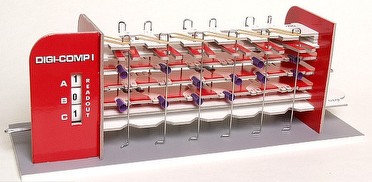Bal said:
I am "only" 40 so I few of your nostalgia items were just before my time...but...
I still remember my mothers face when she walked into the dining room and I had taken apart two old 286 machines to put the best parts of each back together into one better machine. I was 15. And did it just so I could get Mechwarrior by Acitivision working. I figured it couldn't be THAT hard!
She told me years later she about had a heart attack and turned around and walked away before she started screaming at me.
Man I played that game for hours and hours...
I've probably told this story before, but never let redundancy get in the way of a good story I say...
Back when I was first starting out, I worked for a branch of GE that did military software systems development. It was all based on VMS and VAX based machines (another nostalgia point in itself I guess, though I don't miss them.) I was just a tape backup guy who came in around noon, did some maintenance stuff and worked over until late after everyone was gone and did all of the backups.
My boss told me one night before he left, we have a big presentation tomorrow, so before you leave I want to shut down those to machines over there and remove the drives. I had no clue that they had very early versions of removable hard drives, though they were in fact compact tapes. He was telling me to shut it down and eject the tape cartridges, so that they could come in in the morning and put the test tapes in and be ready for the demo.
But, not knowing this, I tore them apart and physically took the drives out of them and laid them all of the parts out on the floor in front of them nice and neatly. So they come in the morning with the military brass, ready to run a demo, and the machines are taken apart.
It was one of those, never ass-ume anything, like how intelligent your tape backup guy is.
And, since we've gone completely OT, another one from that era... I was there one night, and this was later and we'd sucked a whole lot more cash from the military teat and had some quite large machines in the machine room by then. It was all on the usual raised floor with cables underneath, and also water sensors. I ate my supper and sat the remains down in a box I was going to take to the dumpster later. Somehow it tipped over and a little bit of water leaked through the tiles and must have been right on top of a water sensor and the entire complex did an emergency shutdown.
So, I go to call my boss, dreading the call but I had to do it so I could get the system back up. His name was Charlie Pope. I called information and called the number. He apparently answered and I said this is Dean, I'm having a big problem here. And he's talking to me like he clearly knows me, but something isn't right and I can't figure it out. It turned out that I'd reached Charlie Poppe, who had been someone who worked with my father over a decade before who happened to be living nearby all that time later. Back then I'd been going through a rough time (the usual late teen psychodrama stuff), so he thinks I'm making some desperation call to him in the middle of the night about a big problem I'm having, and I think I'm talking to my boss about a problem with the computers. It was really weird.



